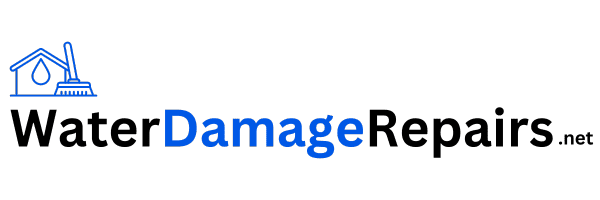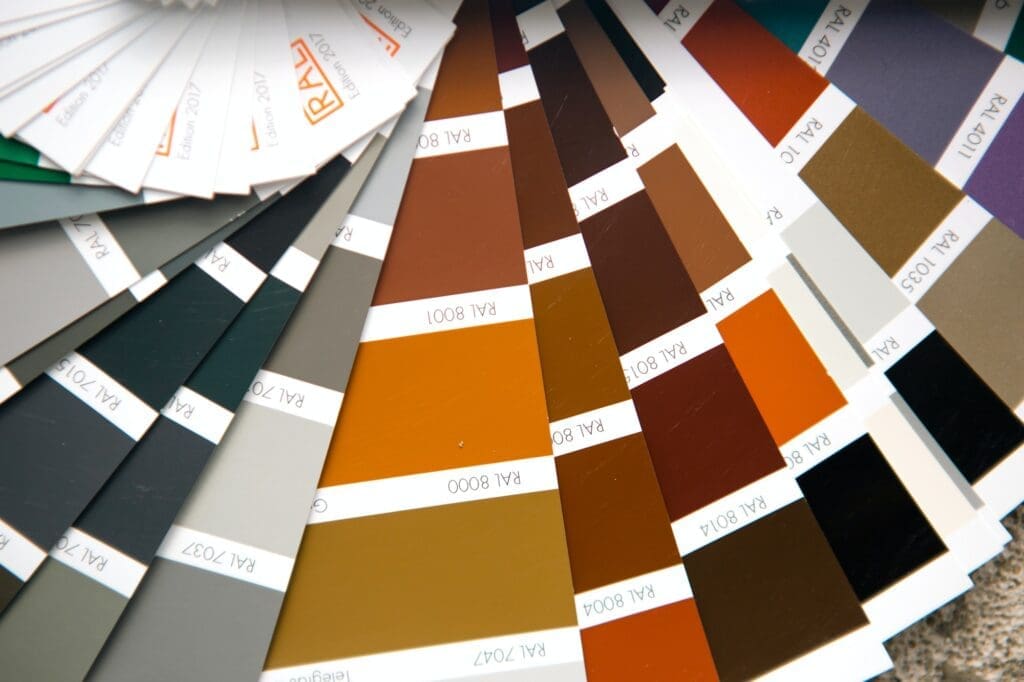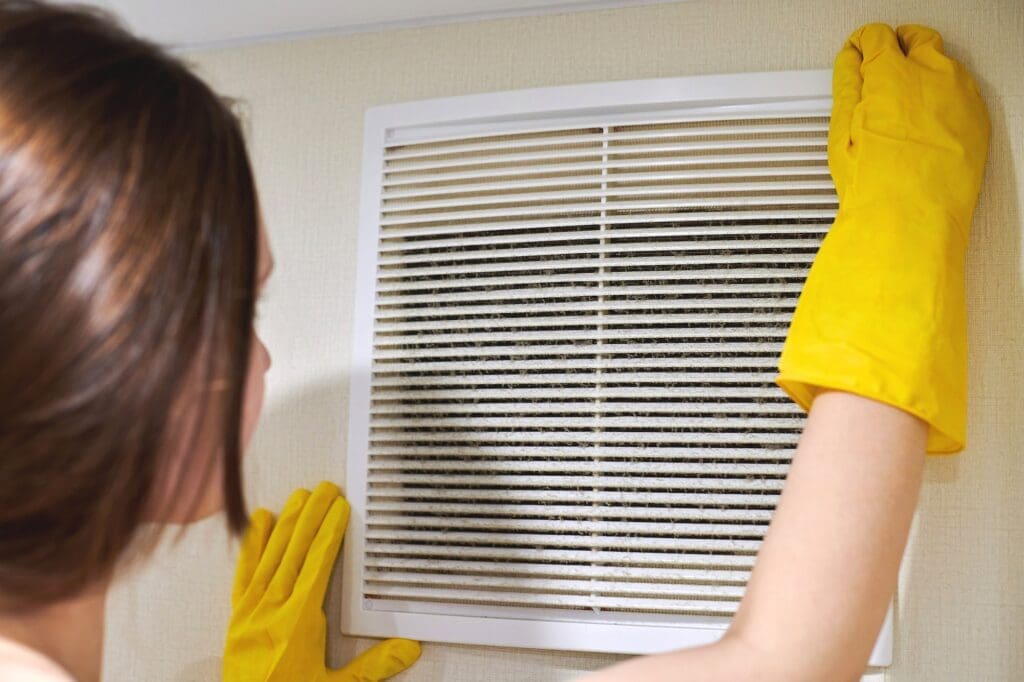Water Damage Survival Guide: How To Stay Safe And Sane
I’ve been there, folks. Wading through my flooded basement in despair, wondering how on earth I could have prevented this catastrophe and what to do next.
As a water damage expert with years of experience under my belt, I’m here to tell you that we can’t always prevent disasters from happening, but we can certainly be prepared for them! That’s why I want to share some valuable tips and insights from my own experiences so that when the unexpected strikes, you’ll know exactly how to stay safe and sane while navigating through the aftermath.
In this Water Damage Survival Guide, I will walk you through essential steps to not only protect your home and belongings during a flood or leak but also provide guidance on helping others who may find themselves in similar situations.
After all, isn’t it our innate desire as humans to lend a hand where needed? So buckle up and get ready – together, let’s learn how to rise above these watery challenges like true knights in shining rubber boots!
Assessing The Damage
On one hand, you’re grateful that your home is still standing; on the other, you’re overwhelmed by the water damage that’s wreaked havoc on your personal sanctuary. It’s a mix of emotions and chaos, but don’t worry – we’ve got you covered!
As a water damage expert, I’m here to guide you through assessing the severity of the situation and identifying any potential risks before diving into action.
First things first: take a deep breath and remind yourself that it’s okay to feel stressed out in this moment. The key is not to let fear take over – remember why you’re doing all of this hard work: for your loved ones, for your community, and for a sense of security in your own space.
Now that our mindset is right, let’s begin by evaluating how severe the damage really is. Look around carefully for signs of structural damage or compromised building materials such as warped wood or sagging ceilings. Identifying these risks early will help prioritize where efforts should be focused when restoring your home to its former glory. And trust me, with patience and dedication, we’ll get there together.
With the initial assessment complete, it’s time to turn our attention towards preventing further damage – because after all, stopping additional harm to your property means less stress and expense down the line. So stay tuned as we dive into effective strategies designed specifically for putting an end to ongoing water woes once and for all!
Preventing Further Damage
Now that we’ve covered the basics of staying safe and sane amidst water damage, let’s talk about preventing further damage. While it might seem like a daunting task at first, there are some simple steps you can take to minimize the impact of water on your property. Trust me, as a water damage specialist, I know how important this is! You already have the heart for serving others; now it’s time to protect your own space too.
One key aspect in preventing additional harm is barring access to affected areas by sealing any cracks or gaps where water may enter. This not only helps keep more moisture out but also makes clean-up tasks easier down the line. So grab some sealant from your local hardware store and get crackin’ (pun intended)!
With all these measures in place, we’re ready to tackle the next challenge: getting rid of all that excess water. Don’t worry – we’ll dive deep into efficient techniques for removing standing water in our next section.
Removing The Water
Can you envision your home after the storm, flooded with water and feeling overwhelmed by the mess? As a water damage expert/specialist, I understand that removing the water is crucial to getting back on track.
Before diving into this task, let’s consider some essential points to make the process less daunting:
- Safety first: Always prioritize your safety and health when dealing with standing water. Turn off electricity in affected areas and wear proper protective gear such as rubber gloves and boots.
- Assess recurring risks: Determine if any specific features of your property or location contributed to flooding. This knowledge will help you take preventive measures for future storms.
- Storing supplies: Keep necessary equipment like pumps, hoses, buckets, mops, and cleaning agents readily available. Having these items on hand can save precious time during an emergency.
Now that we’ve covered those important aspects let’s get down to business!
Begin by using a pump or wet vacuum to remove excess water from your space. Then use towels, mops or squeegees to clean up remaining moisture on floors and surfaces. Remember that it may take several rounds of extraction before all visible signs of water are gone.
Make sure there is adequate ventilation (open windows/doors) during this time so that evaporation occurs more quickly which helps mitigate damages caused by prolonged exposure to dampness thus saving money in restoration costs later down line – not mention reducing stress levels too!
As we move forward through this journey together remember one thing: Rome wasn’t built day neither will be rebuilding our lives impacted aftermath natural disaster but by taking proactive steps identifying source issue preventing recurrence problems becomes manageable achievable goal everyone involved come out stronger better end experience .
So let us come together, support one another, and work diligently towards recovery, for it is through unity, resilience, and determination that we will rise above this challenge and create a brighter, more sustainable future for ourselves and generations to come.
Identifying The Source
Now that we’ve tackled the task of removing water from your home, it’s time to play detective and identify the source of the problem.
Locating leaks can be a bit tricky since they often hide behind walls or under floors. But don’t worry, I’m here to guide you through this process so that you can get your house back in tip-top shape.
To start identifying signs of leaks, keep an eye out for any damp spots on ceilings, walls or floors, as well as any unusual increase in your water bill which could indicate a hidden leak.
Additionally, if you notice mold growth or musty smells in certain areas of your home, these are also common indicators that there might be a water issue lurking beneath the surface.
Now that you’re equipped with some knowledge about locating leaks and identifying signs let’s move forward with drying out the affected area to prevent further damage and complications.
Drying Out The Affected Area
To properly dry out an affected area, the first step is to remove all standing water. This can be done manually with a mop and bucket or with a wet/dry vac, depending on the size of the area. Once the water is gone, it’s time to start drying out the surfaces in the area.
Removing Standing Water
There’s a certain sense of accomplishment that comes with removing standing water from your home, knowing you’re taking control of the situation and helping to restore order.
As a water damage specialist, I can tell you that it’s crucial not only for drying out the affected area but also for avoiding contamination and potential health hazards.
When tackling this task yourself, don’t forget to use personal protective equipment like gloves and boots – after all, we’ve got to look after ourselves so we can better serve others in need.
Inspecting pipes for any leaks or damages is another essential step during this process, as fixing them promptly will prevent further issues down the line.
And remember: patience is key when dealing with water damage; take your time and approach each step methodically to ensure you get the best results possible.
Drying Out Surfaces
Now that we’ve taken care of standing water and inspected the pipes for potential issues, let’s shift our focus to drying out surfaces as part of our mission to restore normalcy.
I can’t stress enough how crucial it is to thoroughly dry every surface in your home – not only does this help prevent mold growth and structural damage, but it also contributes to a safer environment for you and your loved ones.
As an experienced water damage specialist, I know firsthand that assessing risk and preventing leaks before they happen makes a world of difference in the long run.
So, grab those fans or dehumidifiers and let’s get down to business!
Remember, slow and steady wins the race when dealing with water damage remediation; give each area ample time to dry completely so you can truly be confident in your efforts.
And never forget: by taking these steps today, you’re making a positive impact on both your own well-being and that of others around you.
Cleaning And Sanitizing
Ah, the joys of cleaning and sanitizing after water damage – something we all look forward to as much as a trip to the dentist. But fear not, dear reader! I am here to guide you through this thrilling experience with some helpful tips that will not only keep your sanity intact but also make sure you don’t end up growing an indoor mold farm.
Now let’s dive right into evaluating risks and maintaining hygiene during our cleanup process:
- Gloves: Think of them as your knight in shining armor protecting your delicate hands from bacteria-infested waters.
- Masks: No one wants to inhale any funky smells or airborne contaminants while scrubbing away at their disaster zone – so suit up!
- Proper disposal methods: Be it trash bags or biohazard containers, always ensure that you’re disposing of hazardous waste responsibly.
- Sanitize everything (and I mean EVERYTHING): From surfaces and walls to possessions, sanitize using appropriate cleaners (such as bleach) specifically designed for post-water-damage cleanups.
- Ventilation is key: Air circulation helps dry out damp spaces faster and reduces the risk of mold growth; open windows and doors if possible and consider investing in dehumidifiers for enclosed areas.
Before we wrap up this section on cleaning and sanitizing, remember that patience is indeed a virtue when tackling water damage. It won’t be cleaned overnight, but by following these steps diligently, you’ll create a safe environment for both yourself and others around you.
And now that we’ve got ourselves spick-and-span again, let us proceed to explore ways on restoring and replacing items affected by water damage, such as furniture, personal belongings, and structural materials.
This process may involve repairing or discarding damaged items, depending on the extent of the damage and the item’s overall condition.
By taking a proactive approach to restoration and replacement, you can help bring your space back to its original state and prevent further issues from arising in the future.
Restoring And Replacing Items
Now that we’ve discussed safety and sanity during a water damage crisis, it’s time to talk about restoring and replacing damaged items. This part of the process can be both emotional and challenging, but it’s essential in moving forward after an incident like this. When dealing with contractors or shopping for replacements, keep in mind that every situation is different – some items may be salvageable while others will need complete replacement.
| Items to Restore | Steps for Restoration |
|---|---|
| Furniture | Dry out completely, clean surfaces thoroughly, reupholster if needed |
| Electronics | Consult a professional for repair options; disconnect power sources initially |
| Clothing | Wash with appropriate detergent and dry; consider professional cleaning services |
Before jumping into restoration or purchasing new items, take inventory of what you have and determine which pieces are worth saving versus which should be replaced entirely. It’s vital not to rush through this phase as emotions can cloud your judgment causing hasty decisions. Remember, our goal here is not only to restore your physical living space but also help maintain your mental wellbeing throughout this journey.
As we wrap up this section on restoring and replacing items following water damage, let’s dive into another crucial aspect: navigating insurance claims.
Dealing With Insurance
Filing a claim after water damage can be a stressful experience, but it doesn’t have to be. Gathering the right evidence is key to making sure your claim is processed quickly and efficiently.
Filing A Claim
Imagine you’re standing in your water-damaged home, feeling overwhelmed and unsure of where to start. You’ve got this! As a water damage specialist, I’m here to guide you through the process of filing a claim with your insurance company.
First things first, it’s important to document all losses thoroughly by taking photos or videos before beginning any cleanup efforts – trust me, having that visual proof will make things much smoother down the line.
Next, review your policy carefully to understand what type of coverage you have selected; sometimes there are limitations on specific types of damages, so being aware of these beforehand can help manage expectations when working with an adjuster.
Remember: every little step counts toward getting back on track after facing such devastation, and together we’ll get through this challenging time while serving our communities in need. So keep calm and follow through with the claims process – soon enough you’ll be well on your way to recovery!
Gathering Evidence
Now that you’ve got a better understanding of your insurance coverage, let’s dive into gathering evidence to support your claim.
As a water damage expert, I can’t stress enough the importance of thoroughly documenting the effects of the water damage in your home.
Grab your camera or smartphone and take clear photos or videos capturing all affected areas – this will be essential for tracking progress throughout the restoration process as well as proving the extent of damages to your insurance company.
Remember, we’re not just restoring our homes; we’re also serving others by showing them they too can overcome such challenges with determination and resilience.
So keep snapping those pictures and collecting evidence – every bit counts towards getting back on track and rebuilding our communities stronger than ever!
Avoiding Mold Growth
Did you know that mold can start growing within just 24 to 48 hours after water damage occurs? That’s right, in less than two days, your home could be infested with potentially harmful and unsightly mold. As a water damage specialist, I’ve seen firsthand how quickly it can sneak up on people, which is why it’s critical for us to take action as soon as possible.
By evaluating dampness levels and avoiding humidity buildup in our homes, we’re not only protecting ourselves but also creating safer environments for friends and family who might come over.
Now let me share some practical steps that can help minimize the risk of mold growth after experiencing water damage. First things first – properly ventilating affected areas by opening windows or using fans will play a key role in reducing moisture levels indoors. Additionally, investing in a dehumidifier will make a world of difference when it comes to maintaining optimal humidity levels throughout the house.
Remember, being proactive about addressing any signs of dampness early on will save you from potential health risks associated with mold exposure while ensuring everyone around you feels comfortable too. With these measures in place, we are better equipped to focus our attention on aiding others who may need assistance during such challenging times.
Aiding Others In Need
Now that we’ve covered how to avoid mold growth, let’s shift our focus to a topic that’s equally important – aiding others in need.
After all, water damage doesn’t just affect us individually; it also impacts entire communities. By providing support and seeking help for those affected by water damage, you’re not only improving their lives but also strengthening the bonds within your community.
No one should have to face the aftermath of water damage alone. Reach out to friends, neighbors, or even strangers who may be struggling with the effects of flooding or other types of water-related disasters. Offer your assistance with clean-up efforts, lend a listening ear as they share their experiences or even provide temporary shelter if needed.
You might also consider volunteering at local disaster relief organizations or donating supplies such as food, clothing, and cleaning products. Remember: every little bit helps when it comes to easing someone else’s burden during these challenging times.
In turn, don’t hesitate to seek help yourself if you find that you’re struggling too – this way everyone can work together towards recovery!
Frequently Asked Questions
How Can I Protect My Health And Safety During The Water Damage Cleanup Process?
When it comes to water damage cleanup, it’s essential not to throw caution to the wind. Protecting your health and safety is a top priority during this process, so let me share some expert tips with you.
First, when handling any damaged items or debris, always wear gloves and other protective gear like masks and goggles; protecting possessions goes hand in hand with safeguarding yourself.
Mold prevention is also crucial for maintaining a healthy environment – be sure to remove standing water as soon as possible, use fans and dehumidifiers to speed up drying time, and keep an eye out for any signs of mold growth.
By following these steps, you can ensure that both you and those around you benefit from a safe and effective cleanup process.
What Common Household Items And Appliances May Pose A Hazard Or Malfunction After Water Damage?
When dealing with the aftermath of water damage, it’s important to be aware of common household items and appliances that may pose a hazard or malfunction.
Electricity safety should be your top priority, as water can cause short circuits and increase the risk of electrocution. Be cautious when handling electrical devices like TVs, computers, and kitchen appliances; in fact, it’s best to turn off power at the main breaker if you suspect any water exposure.
Additionally, watch out for potential water contamination from chemicals stored in garages or basements, as well as sewage backup due to flooding.
Keeping these hazards in mind will help you stay safe while getting your home back on track after water damage.
How Do I Determine If My Home Is Structurally Safe To Enter And Begin The Cleanup Process After Water Damage?
Navigating the aftermath of water damage can feel like tip-toeing through a minefield, but fear not – as a water damage expert, I’m here to guide you.
First and foremost, before diving into the cleanup process, it’s crucial to ensure your home is structurally safe to enter. To do this, start by conducting thorough water testing in all affected areas and assessing any potential hazards or structural damages.
Keep an eye out for sagging ceilings, swollen walls, or cracks that could indicate compromised stability.
It’s also wise to enlist professional help if you’re unsure about your home’s safety – they’ll be able to provide preventative measures so you can confidently move forward with cleaning up after water damage.
Remember, serving others begins with ensuring our own well-being; let’s make sure we take care of ourselves and our homes first before extending a helping hand!
What Are Some Signs That Professional Help May Be Necessary For The Water Damage Restoration Process?
In my experience as a water damage specialist, there are certain signs that indicate when it’s time to call in the professionals for help with the restoration process.
If you’re dealing with extensive flooding or standing water that can’t be easily removed using household tools, it’s best to seek assistance from experts who have the proper equipment and know-how.
Furthermore, if you notice mold growth, warped flooring or walls, or suspect that your home’s foundation has been compromised, these issues require immediate attention from skilled technicians.
It’s also wise to reach out for professional support when implementing waterproofing measures and protection protocols to safeguard your property against future incidents of water damage.
Remember – investing in expert guidance now can save you considerable time, money, and stress down the line!
How Can I Effectively Communicate With My Family And Neighbors About The Extent Of The Water Damage And Coordinate Assistance If Needed?
Imagine, just by coincidence, you find yourself in a situation where your home has suffered extensive water damage and you’re not sure how to go about seeking help or legal advice.
Well, as a water damage expert/specialist, I’d advise that the first step is effectively communicating with your family and neighbors about the extent of the damage.
Be open and honest when discussing the severity of the issue and don’t hesitate to ask for assistance if needed.
Remember that people have a subconscious desire to serve others, so don’t be shy about reaching out – chances are they’ll be more than willing to lend a hand!
Whether it’s helping you clean up messes or connecting you with professionals who can address structural concerns, having clear communication will make all the difference in coordinating aid during this challenging time.
Conclusion
In conclusion, it’s vital to prioritize your well-being during the water damage cleanup process. Remember, you’re not alone in this journey; lean on your family and neighbors for support and assistance when needed. Together, as a united front, you can tackle any obstacles that come your way.
Facing the aftermath of water damage is like navigating through uncharted waters – unpredictable and challenging at times. However, by staying vigilant about potential hazards, assessing the structural safety of your home, and knowing when to call in professional help, you’ll be able to steer clear of any hidden dangers lurking beneath the surface.
Lastly, communication is key – keep an open line with those around you so everyone stays informed about the extent of the damage and any necessary steps moving forward.
With patience, perseverance, and teamwork, you will soon find safe harbor amidst the stormy seas of water damage restoration. And remember: even though this experience may feel overwhelming now, brighter days are just around the corner.



